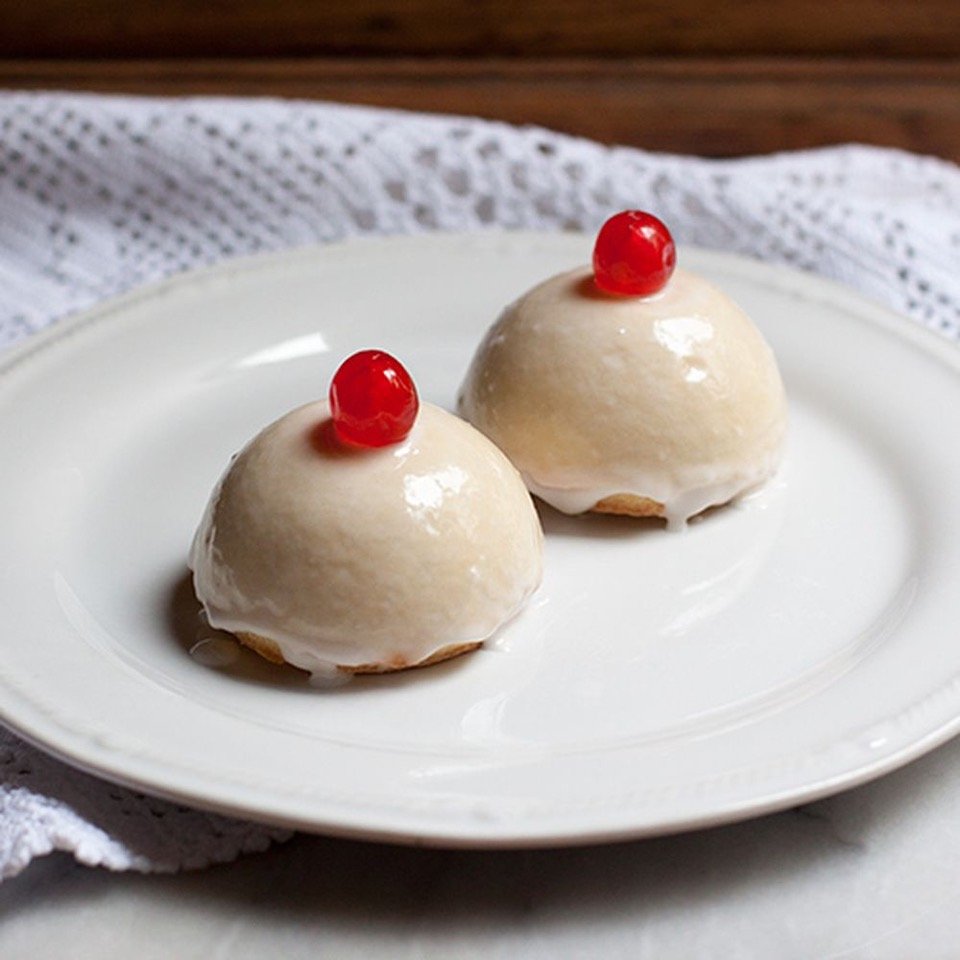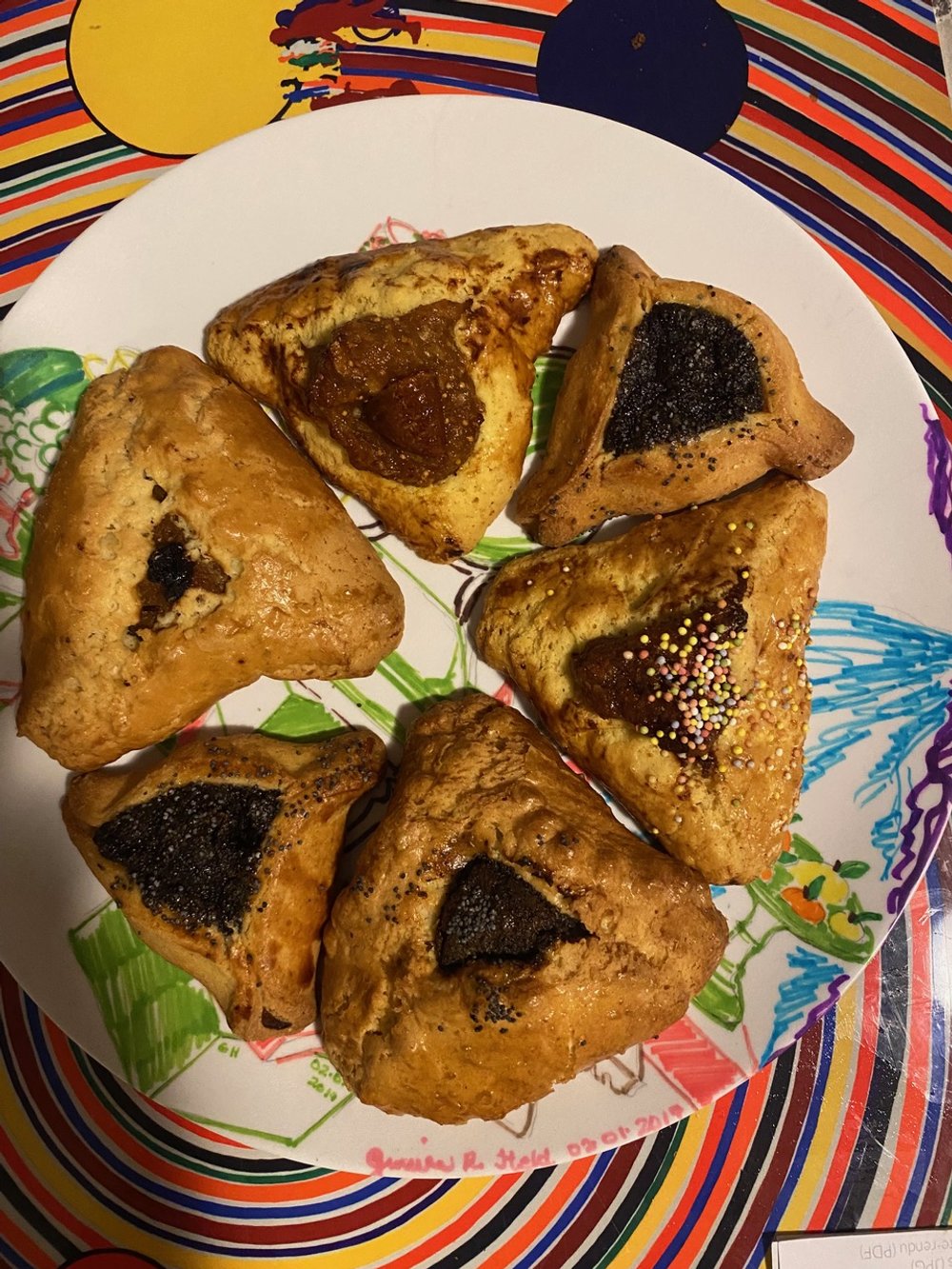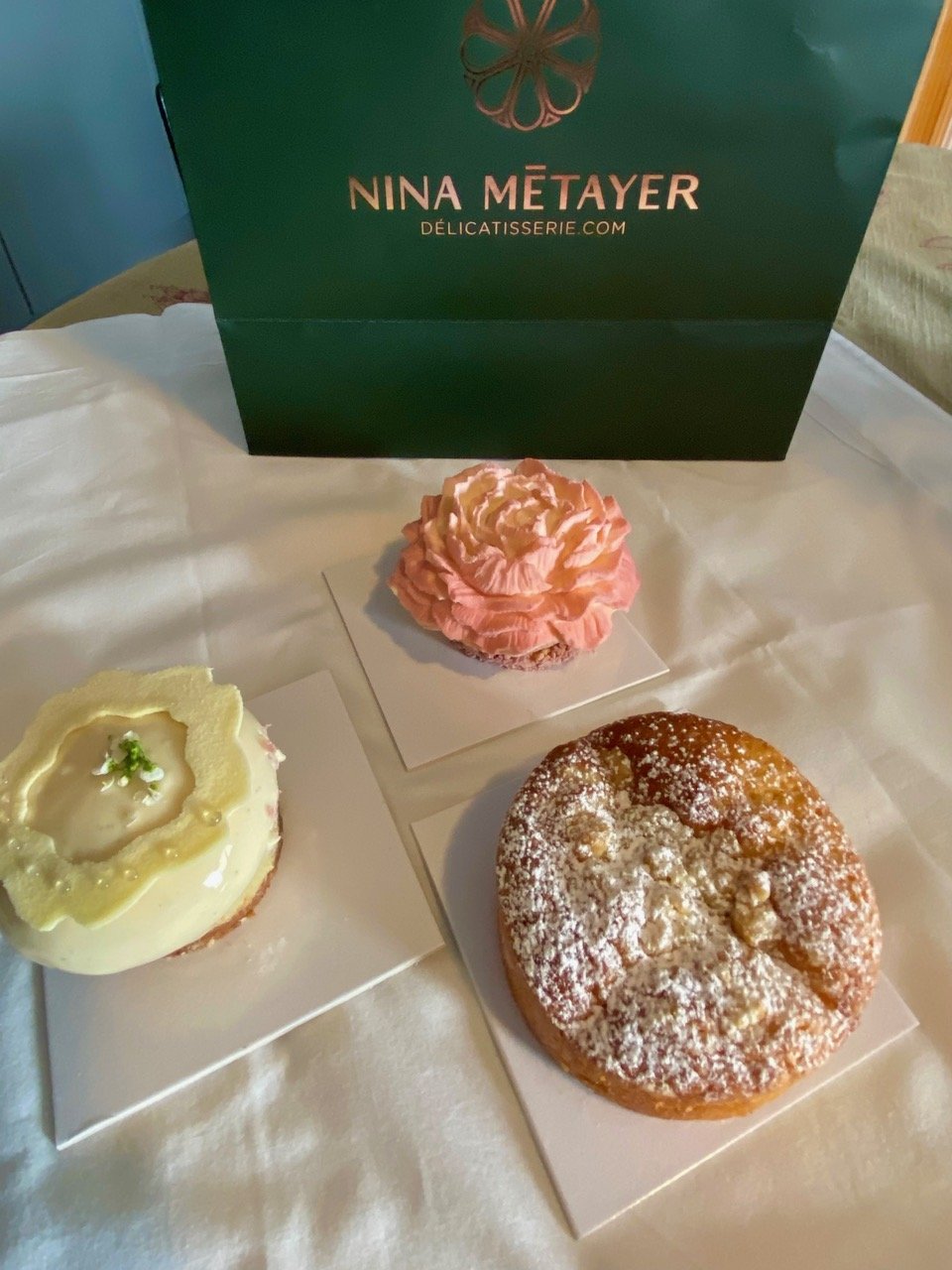Eating and Reading and Looking
Bienvenue and welcome back to Musée Musings, your idiosyncratic guide to Paris and Art. I’m ready for a bit of a respite since the question of ‘how’ the world (or at least ours) will end has more or less been resolved. All we need to worry our pretty little heads about now is the ‘when’. And since the destruction of all norms and decency happened with astonishing speed, I don’t imagine that ‘the when’ will be very long in coming. So, while we wait, herewith some of the things I’ve been doing to while away my time. Nero fiddled, Trump golfs, I read. Every morning, as I drink my café creme, I read 20 pages in French of À la recherche du temps perdu. I’ve started at the beginning again, Book 1, Du côté de chez Swann. It grounds me, centers me, prepares me to confront the day ahead.
Let’s see, what else. A couple weeks ago it was Purim. Esther, the star of that particular holiday was a kick-ass Jewess. While female Christian martyrs are usually shown getting their teeth pulled out (Apollonia, the patron saint of dentists) or their eyes plucked out (Lucy, the patron saint of optometrists & the blind) or their breasts torn off (Agatha, for whom the casastella cookie Is named - breast shaped with a cherry on top) the Old Testament gals are mostly doing something dangerous - Esther risking her neck to save her people from extermination (sound familiar?) and Judith, shown either during or after she decapitates Holofernes. (Figs 1-7) Here’s some good news, the Musée Jacquemart-André is currently showing my favorite Baroque artist, and maybe yours, too. The inimitable Artemisia Gentileschi whose painting of Judith hacking off Holofernes’ head (Fig 8) never fails to delight. Her biography intersected perfectly with that triumph.
Figure 1. St.Apollonia getting her teeth pulled out
Figure 2. St Lucy with her eyes on a platterFigure 2. St Lucy with her eyes on a platter
Figure 3. St. Agatha having her nipples plucked
Figure 4. St Agatha with her breasts on a platter
Figure 5. The cookies inspired by St Agatha’s martyrdom
Figure 6. Esther before Ahasueras, Tintoretto
Figure 7. Judith beheading Holofernes, Caravaggio
Figure 8. Judith enthusiastically hacking Holifernes’ head off, Artemisia Genteleschi
Of course, there’s a Proust angle. There’s always a Proust angle. Proust’s mother was very fond of the story of Esther. In 1905, Sarah Bernhardt performed in a production of Jean Racine’s Esther (Fig 9). Bernhardt starred, not as Esther (although the diva was 1/2 Jewish) but as King Ahasueras (who you probably know as Xerxes I). The music was composed by Proust’s friend and maybe lover, Reynaldo Hahn. He performed the music at Proust’s home one evening in April of that same year.
Figure 9. Sarah Bernhard as King Ahasueras in Racine’s play, Esther
To ‘celebrate’ Purim, rather than dressing up as Esther, which is the only option little Jewish girls have (boys get to decide whether they want to be a King, Cousin or Counsellor - Ahasueras, Mordacai or Haman), I went to 3 patisseries on rue des Rosiers in the Marais and bought 2 hamantaschen at each one. (Fig 10) Hamantaschen are cookies in the shape of the three cornered hat allegedly worn by the guy who wanted to murder all the Jews, Haman. The cookies are filled with prune jam or apricot preserves or poppy seed paste The taste test yielded this result: the bigger the cookie, the worse the taste - maybe because the cookie / filling ratio was off or maybe because the dough was so ordinary. But, I bought them so I ate them, well a little at a time, it took me two weeks to get through all six.
Figure 10. The six hamantaschen that I bought on rue des Rosiers, fillings include prune, apricot and poppy
A few days after my less than successful pursuit of an edible hamantaschen, it was my birthday! Places at which I have been a loyal patron offered me good wishes and goodies. The Guerlain spa at the Waldorf Hotel in Versailles offered me a coupe de champagne if I had a soin (massage or facial); Air France offered me 50€ off any trip I wanted to take. Alain Ducasse gave me a free chocolate bar. And Picard, where you can buy all things frozen and lots of things you would never want to buy, frozen or fresh, offered me a choice of tarte or chocolat fondant. I should have taken the tart. (Fig 11)
Figure 11. Birthday cadeaux!! Chocolate bar from Ducasse and Fondant au chocolat from Picard
Ginevra ordered a sampling of patisseries for me at a patisserie I had only just learned about. Owned by the young (and very thin) patissier Nina Métayer who was awarded the title of World's Best Pastry Chef 2024. I saw pdf interviewed on my favorite French television show, actually the only television show I watch, Quotidien. It incorporates serious news reporting with interviews of authors, actors, singers and chefs and the equivalent of stand-up routines by young comedians who would fit right in with the Saturday Night Live gang. Nina Métiyer’s patisserie, called Délicatisserie (Fig 12) is on the 8th floor of Printemps. It was a lovely day and a nice walk. Of course I didn’t eat my patisseries right away, I saw a film and had dinner first.
I almost never see films. I prefer reading books. I like to read at my own pace. If I’m not sure I want to keep reading, I read a few pages at the end of the book to see if it’s worth my time. And when I’m reading a book, unlike seeing a film, there is no loud music pretending to be a Greek Chorus, preparing me (more like scaring me) for what’s to come.
There are a few film makers whose work I adore. They mostly do ‘slice of life’ films where not much and virtually nothing scary ever happens. Bob Altman’s films were like that. Sophia Coppola’s and Wes Anderson’s are. I have watched Coppola’s Lost in Translation a few times and her Marie Antoinette more times that I can remember. I wrote about an exhibition on Marie Antoinette a few years ago that was at the Concergerie, where the queen spent the last 76 days of her life. Coppola’s film took center stage in that exhibition. I love Wes Anderson’s Budapest Hotel and Darjeeling Limited. I have listened to the sound track from Marie Antoinette and Darjeeling Limited so often that hearing any song from either of them transports me right back to the films themselves. BTW, there’s a retrospective of Wes Anderson’s films now on at La Cinémathèque française through July. It arrives at the Design Museum, London in November. I like some Coen Brothers films, although films like Fargo and The Big Lebowski are confusing because of the mix of comedy bordering on slapstick coupled with violence. Finally, I must admit to adoring a film by Spike Lee called Inside Man that I watch as often as I can because, well because it’s perfect. But mostly I avoid films because they are just too manipulative for my taste.
Anyhow, the film I saw on my birthday was A Real Pain (the name of the film, not my feelings about the film), written and directed and starring Jessie Eisenberg. (Fig 13) Who, as it turned out, was interviewed on the same show, at the same time as the patissier. He was delighted to taste her patisseries because as it happens, his wife and son are gluten intolerant so he is a solo traveler on the train of fine patisseries. Of course I only caught snippets of Jesse’s voice since the simultaneous translator spoke over him. I liked the film. It was 90 minutes long and that was long enough. Yes it’s a road film and a buddy film but it’s also a Holocaust film. I hadn’t read anything ahead of time about the film except about why Jessie Eisenberg cast Kieran Culkin and why he gave him the role he was going to take for himself. The temporary family of six on this Holocaust tour are Jesse and Kieran as cousins, a retired Jewish couple from Ohio, a single Jewish woman from California, a survivor of the Rwandan genocide who converted to Judaism and their Christian guide from Yorkshire, England. It’s quirky and affecting They visit the Warsaw Ghetto and pose in front of a monument to the heroes of the Uprising. They have fun there. When they tour the concentration camp, they are silent. That is as close as I ever plan to get to a concentration camp. It was plenty close enough.
Figure 13. A Real Pain, written, directed and starring Jesse Eisenberg & Kieran Culkin
Before the film aired, in a theatre with 7 rows of 8 seats in each row and a screen the size of some I have seen through windows as I walk by on my way to Land’s End, there were advertisements for upcoming films. One upcoming film is based on one of my favorite books of all time, Reading Lolita in Tehran by Azar Nafisi. There are parts in the book that are so difficult to read that I had to put it down. I don’t think I could see a film based on the book, but it did make me want to read the book again.
After the film, I went to Bofinger for dinner. Although it can be loud and crowded, it is also always beautiful. And I like the food, especially Choucroute de la Mer, which has pieces of haddock, salmon and sea bass, with “pommes à l’anglaise, beurre blanc au raifort” all sitting on a bed of sauerkraut. (Fig 14) I had a glass of wine with my meal but not dessert because that was waiting for me at home! (Figs 15, 16)
Figure 14. Choucroute de la Mer, Bofinger
Figure 15. Pretty as a picture patisseries from Nina Métayer’s Délicatisserie
Figure 16. The rose petal patisserie reveals its secret self
Oh, one more food related item. I came home from the marché last Sunday with a bunch of radishes, the leaves of which were beautifully fresh looking. It seemed more of a sacrilege to throw them away than it normally does. I found a recipe by David Lebovitz for radish greens pesto, with walnuts instead of pine nuts and olive oil and parmesan cheese. Not only is it delicious but it will make you feel virtuous! (Fig 17)
Figure 17. Radish green pesto with edamame beans
Right, books. For a few months, my murder mystery book club reading selections were just not doing it for me. My prerequisites for reading a murder mystery are simple, the gruesome stuff has to have already happened or happen well away from the people I am following. I don’t want to be in the head of either the perp or the victim. I need to accompany the detective or police officer or amateur sleuth on their search for the culprit. I need to trust my guide / narrator. So while I can read Ruth Rendell mysteries as long as Chief Inspector Rex Wexford is on the trail, her one-off mysteries are just too creepy for me. P. D. James’ Detective Chief Inspector Adam Dalgleish is one of my favorites as are the two police inspectors and their wives that Anne Perry created, Thomas and Charlotte Pitt and William Monk and his wife Hester. Louise Penny’s series featuring Chief Inspector Armand Gamache, which mostly takes place in Canada is another of my favorites, as is Donna Leon’s books. The protagonist is Commissario Brunetti, whose wife teaches English literature at the local university. Centered in and around Venice, Donna Leon is now a persona non grata there because of her less than positive take on Italian politics.
My book club’s selections for the past two months have been perfect. They are both series and they were both new to me. The first is the Kate Shackleton mysteries written by Frances Brody. Which was a good one to find since Jacqueline Winspear’s Maise Dobbs series has come to an end. Here’s the premise, a young woman’s husband is declared missing in action during the Great War. She tries to find him. But she can’t. Instead she finds a career for herself using the detective skills she has acquired to help other people find their missing loved ones. We read the first in the series and now I’m reading another. So far there are 13 books. The other series is by Peter Lovesey, It is about a rough around the edges, anti-technology detective, Peter Diamond. The series takes place in Bath. There are 22 books in all, the first one was written in 1991 and the final one was written just last year. We read the 16th for our book club and I have just read the first one on my own. Again, it’s a comfort to know that there are still so many left to read. Neither of them are Proust, but I am enjoying them. And I read them the way I eat chocolate, a little every day at the end of the day,
I wrote a review a few weeks ago about my friend L. John Harris’ memoir, Portrait in Red: A Paris Obsession. Which began in Paris, moved to London, went onto Berkeley but stayed mostly in John’s head, in a good way. These past few weeks, I read two books that were about one thing and also about something else. One, ostensibly about starting a cooking school in Paris, was also a memoir. The book by Jane Bertch is called The French Ingredient: Making a Life in Paris One Lesson at a Time. Bertch had the idea to open a cooking school in Paris for mostly English speaking, mostly American tourists. After a few false starts, it became a reality in 2009. It has survived global issues like economic downturns and Covid lockdowns and personal ones, too. I guess because I also restored and renovated a property in France and opened a school for mostly American artists, I identified with Jane’s tribulations, admired here tenacity and celebrated her successes.
I read a work of fiction written by a woman who mostly writes memoirs (and cook books) that is also a love letter to places in Paris familiar to me and probably to you, too. Written by Ruth Reichl the book is called The Paris Novel. It’s about a young woman whose childhood was blighted by an appalling mother whose sole gift to her daughter arrived after her death, a one way ticket to Paris. There is adventure and intrigue, hesitations and uncertainty, mixed with name dropping and ingredient sharing but finally with a sense of community and interconnectedness that won me over.
Finally, because I am here to write about art and you are here to read about it…. While I was writing the Degenerate Art reviews, I stayed away from museums but I did look at art, in two galleries, not far from my apartment. One gallery, Magnin A had work by the Congolese artist, Jp Mika. As the gallery notes tell us, Jp Mika “plunges viewers into a poignant reflection on the preservation of our planet..… In the manner of Arcimboldo, his figures melt into the natural world, metamorphosing into lush forests.…” African fabric is an essential element in Mika’s work and it is through the use of fabric that the artist pays homage to Africa. Sape (Congolese for clothes, fashion) is how the artist celebrates “the richness and vitality of nature, while symbolizing the unity between man and his environment… (and) … the importance of preserving this fragile harmony.” (Figs 18-20)
Figure 18. Self portrait in profile, Jp Mika
Figure 19. Portrait of Rudolf II as Vertumnus, Giuseppe Arcimboldo
Figure 20. A couple entwined in nature and Sape (Congolese for fashion, fabric) Jp Mika
The second exhibition I saw, at the Perrotin Gallery in the Marais was called FEMMES. It was conceived by Pharrell Williams, who is, among a million other things, the Men’s Creative Director for Louis Vuitton. The exhibition, as the name suggests, focuses on the work of women artists, specifically black women artists. “Exploring textile art—traditionally tied to women’s labor and historically marginalized in art history—FEMMES highlights the intricate narratives embedded in fabric, fiber and thread….” Black women are Williams' inspiration - from his wife and mother to his friends and muses. (Figs 21, 22)
Figure 21. From Femmes exhibition curated by Pharrell Williams at Perrotin Gallery
Figure 22. From Femmes exhibition curated by Pharrell Williams at Perrotin Gallery
Oops, I forgot to tell you about the opera, Pelléas and Melisandre. (Fig 23) Oh well!
Figure 23. Pelléas and Melisandre, music by Claude Debussy, based on play by Maeterlinck
Next Sunday - my whirlwind week in Oxford. Whirlwind and Oxford don’t seem to fit in the same sentence I know, but it was and I’ll tell you all about it. Gros bisous, Dr. B.
Thanks to everyone who commented on last week’s article. I wasn’t expecting to write three posts about one exhibition. But I found it surprisingly, shockingly topical.






















